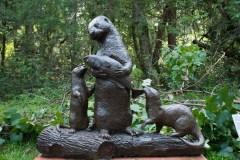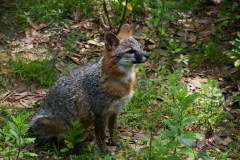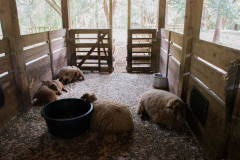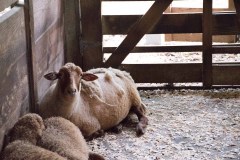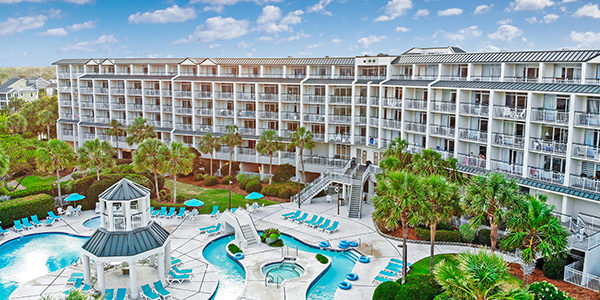
Lowcountry Zoo gives native species second shot to survive, thrive
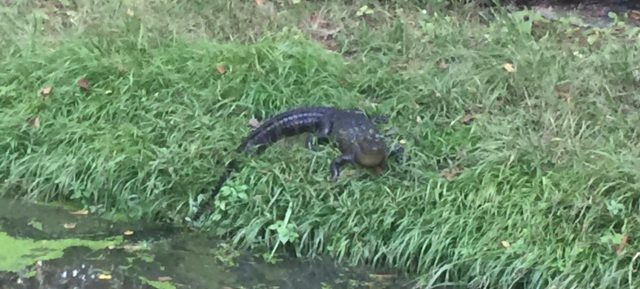
This young alligator found its way into the Cypress Aviary through the tidal creeks that feed the swamp.
Brookgreen Gardens is renowned for its botanical beauty, but few realize that the former rice plantation’s native fauna is as bountiful as its famed flora.
Tree-lined trails lead visitors through a seemingly endless maze of awe-inspiring plants and sculptures. But beyond the garden gates, Brookgreen serves as a secluded sanctuary for native animals. Teeming with diverse wildlife, the 9,100-acre property provides plenty of room to roam and ideal habitat to stay hidden from humans.
Visitors can catch a rare glimpse of these low-key species at Brookgreen Gardens’ Lowcountry Zoo, the Grand Strand’s only Association of Zoos and Aquariums (AZA) accredited facility that literally allows the animals in its care to feel right at home.
“Some zoos spend lots of money trying to recreate their animals’ natural habitat, but we don’t have to recreate anything,” said Brookgreen zookeeper Jared Wagner, a lifelong outdoorsman and animal-lover. “This is their natural habitat. This is the kind of place they would thrive in the wild.”
So why aren’t they in the wild? For animals lucky enough to get a new lease on life at the Lowcountry Zoo, their second home is the next best thing to freedom and a far better fate than the alternative.

Precious the White-tail deer came to the Lowcountry Zoo as a young fawn and loves humans.
A Real ‘Animal House’
Meet Precious, and if you visit the Lowcountry Zoo there’s a good chance of that happening. Unlike the other whitetail deer in her herd, which maintain a healthy fear of humans, Precious was brought to Brookgreen as a newborn fawn separated from her mother.
“A lot of people don’t realize that a doe will hide her young in tall grass during the daytime and check on them throughout the day,” Wagner said. “People have good intentions, but they find a fawn like Precious, assume she has been abandoned and try to rescue her or make her a pet. It’s usually best to leave them alone.”
But not always. Another Brookgreen success story is Eddie, a young river otter that was recently found near death in Conway. It is suspected someone took Eddie from the wild and tried to raise the pup as a pet. Only fast action by a police officer, animal control specialists and veterinary staff saved his life.
“Eddie was lucky to be found by someone who knew what to do,” Wagner said as the spunky otter played with his “adopted parents” in an enclosed exhibit. “Most people want to help but they don’t know how. I recommend doing a quick Google search to get some basic info and calling animal control or an animal hospital for help.”
The Lowcountry Zoo works with several AZA partners and local veterinary organizations, including the Ark Animal Hospital in Surfside Beach, to find the right rehab facility for each creature. It’s the least we two-legged beasts can do to help our four-legged friends.
“Most of the animals that come here are either directly or indirectly because of humans, whether it’s being hit by a car or a hunting accident,” Wagner said. “It’s unfortunate, but we beleieve it’s up to humans to try to make it right, or at least do the best we can. That’s our job.”
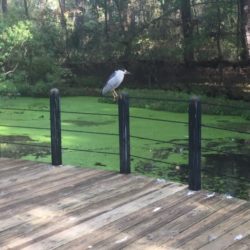
A Black-billed Heron hangs out on the boardwalk at the Lowcountry Zoo’s Cypress Aviary.
A Wing and a Prayer
Precious and Eddie are just a couple of Wagner’s pet projects at the Lowcountry Zoo, which houses other mammals like red foxes, hedgehogs and skunks, as well as reptiles such as snakes, turtles and an 12-foot alligator named Cowboy. But the majority reside in the Cypress Aviary, a massive net enclosure over pristine swampland.
Black-Billed Herons, White Ibis and Snowy Egrets flock together in the spacious environment just as they would in the wild. The netting is placed high in the treetop canopy, giving birds the freedom to fly within the friendly confines and feast on fish delivered fresh by tributary tidal creeks.
“This was the first aviary to be built on a swamp,” Wagner said while strolling along the raised boardwalk that winds through the enclosure. “They have lots of trees and room to fly. Their food and water supply is provided through natural enrichment, so this is exactly like their natural habitat.”
Ducks and other waterfowl species splash around in a separate aquatic environment, while birds of prey like eagles, owls and hawks overcoming injuries or illnesses are kept in individualized enclosures with trees and nesting materials to make their stay as comfortable and natural as possible.
Those with broken wings (like another one of Wagner’s pet projects – Cooper the feisty Red-Tail Hawk), are kept in safer spaces and fed by handlers until they recover and can hunt for their own food. They transition from prepared meals by the Zoo Kitchen to practicing their skills on mice for the chance of a future return to the wild, but only if and when they are ready.
“Even healthy birds in the wild only have about a 30 percent success rate when they hunt, so 70 percent of the time they miss,” Wagner said. “These birds would be at a big disadvantage. They wouldn’t be able to catch enough food to survive. The ultimate goal is to get them ready for a successful release.”

A Marsh Tacky horse (left) and American mule take a break at the Lowcountry Zoo’s Plantation Farm.
From Barnyard to Butterflies
Not all the animals at the Lowcountry Zoo are native to the area, and not all are in for health issues. Such is the case with the adjoining Plantation Farm and the Whispering Wings Butterfly Experience exhibits.
The farm features the same species of domesticated animals that lived here when the land was part of a working plantation, including Carolina Marsh Tacky horses bred to run on a swampy landscape (a favorite of Revolutionary War hero Francis Marion’s forces) and American mules for plowing pluff mud fields.
True to its Colonial era trappings, the Plantation Farm also features Red Devon cattle, Dominique chickens and Spanish goats that were found living on a barrier island off the South Carolina coast. Unlike their wild neighbors, these domesticated creatures can be petted and hand-fed. The baby goats are a hit with visitors.
But perhaps the most popular animals on property aren’t cute and cuddly mammals but rather insects – butterflies, and lots of them. The indoor and outdoor displays feature hundreds of butterflies, including Zebra Longwing, Giant Swallowtail and Painted Lady, that make their full four-stage metamorphosis on site.
The cycle of life is the recurring theme at the Lowcountry Zoo, which serves as the ultimate foster home and rehab center for animals in distress. Their offspring are often released when the time is right, replacing their parents in the wild and hopefully never returning.
“In a perfect world this place wouldn’t exist, but these animals need and deserve our help,” Wagner said. “We’re just trying to take a bad situation and find a silver lining.”
